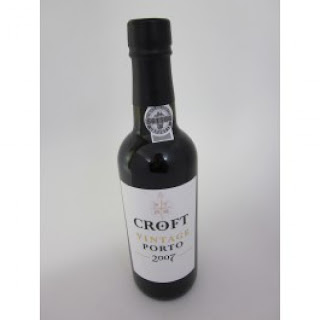With the onset of the cold weather, I start thinking of sitting by a fire with a plate of cheese (especially blue), apples, and nuts, and sipping on a nice Porto. This is such a wonderful ritual that it’s almost worth half freezing to death driving home after work to enjoy it.
 Porto, or
Port, is a wine produced in the Duoro Valley of northern Portugal. It is
typically red and sweet, although dry white forms are occasionally seen. Port
is fortified by the addition of a neutral spirit called aguadente that stops
fermentation, leaving residual sugar and an alcohol content of 18-20%. It is
then aged in barrels.
Porto, or
Port, is a wine produced in the Duoro Valley of northern Portugal. It is
typically red and sweet, although dry white forms are occasionally seen. Port
is fortified by the addition of a neutral spirit called aguadente that stops
fermentation, leaving residual sugar and an alcohol content of 18-20%. It is
then aged in barrels.
The Duoro
Valley was defined as an appellation in 1756, making it the oldest in the
world. Over 100 different grapes can be
used, but only five make up the vast majority—Tinta Barroca, Tinta Cao, Tempranillo,
Touriga (most widely grown), and Touriga Nacional (considered the best but
difficult to grow).
Red Port is
found in several styles.
 Tawny Port
is aged in wooden barrels that expose it to gradual oxidation and evaporation.
As a result, it gradually mellows into a golden brown color with a distinct nuttiness
and viscosity on the palate. If a bottle of Port says simply “Tawny,” it has
been aged in wood for at least two years. Designations of 10, 20, 30 and over
40 year old Tawny exist at markedly escalating costs. Most Port houses blend
wines from several vintages to keep their style consistent. A Tawny from a
single vintage is called a Coheita.
Tawny Port
is aged in wooden barrels that expose it to gradual oxidation and evaporation.
As a result, it gradually mellows into a golden brown color with a distinct nuttiness
and viscosity on the palate. If a bottle of Port says simply “Tawny,” it has
been aged in wood for at least two years. Designations of 10, 20, 30 and over
40 year old Tawny exist at markedly escalating costs. Most Port houses blend
wines from several vintages to keep their style consistent. A Tawny from a
single vintage is called a Coheita.
Ruby is the
most common and the least expensive Port. After fermentation, it is stored in
concrete or steel tanks to prevent oxidative aging. This keeps the fruit fresh
and lively. Reserve ports are usually
rubies from the best lots of grapes.
Late Bottled
Vintage (LBV) was wine that was destined to become Vintage Port but was left in
barrel longer than planned, usually due to decreased demand. So it is somewhat similar to a Vintage Port,
but is softer and rounder because of the longer time in barrel, and usually a
bit lighter in style.
Vintage Port
is the most famous of the Ports, the rarest (less than 2% of all Port
produced), and the most expensive, approaching $100.00 or more per bottle at
release. This is made from grapes produced in a single year, and only if the
harvest is of excellent quality (usually 3 or 4 times per decade). A vintage is
declared in the second spring after harvest. The wine is aged for a maximum of 2 ½ years in wood before
bottling. Many require an additional 10, 20, or even 40 years before they reach
their proper drinking age. They retain their ruby color and their fresh fruit,
but are remarkably powerful and complex…and can remain drinkable for many
decades.
There are
many excellent Port houses. Symington
Family Estates owns the brands Graham, Dow, and Croft which are all good. Also
excellent is the Fladgate Group (Taylor, Croft, and Fonseca). Most Rubies cost
in the low teens, while the plain Tawnies cost in the mid teens. Ten year old
Tawnies cost in the thirties and 20 year olds cost in the fifties and sixties.
LBVs average twenty-five to thirty dollars.
When considering these prices, remember that
these wines are thick, sweet, and powerfully flavored. They are meant to be
drunk in much smaller amounts than typical table wine, and half a glass is
usually more than enough. One bottle will give you lots of enjoyment!





.png)









.jpg)



























